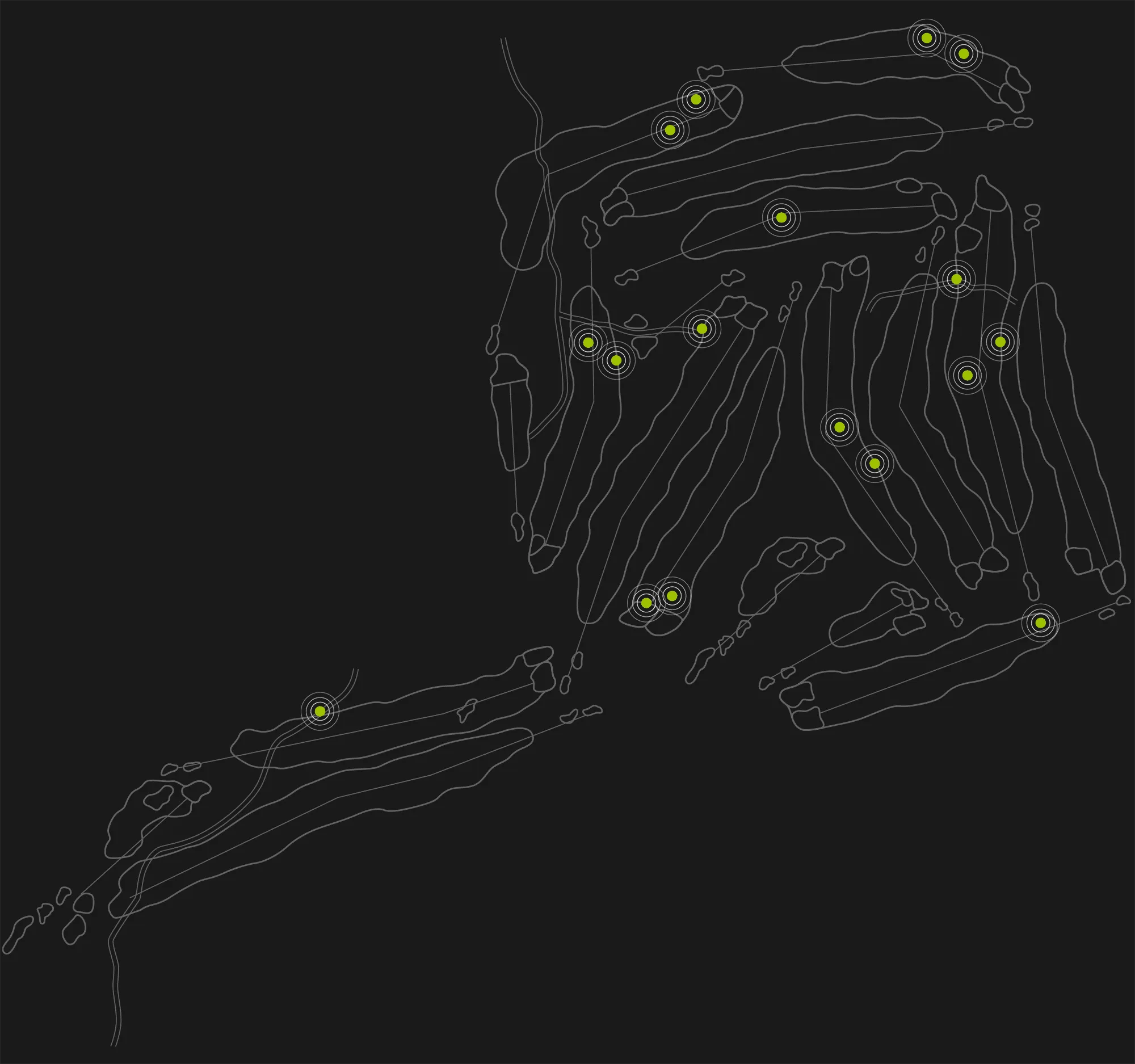Every golf course manager knows the frustrating reality of bottlenecks. They're the slow-downs and stoppages that disrupt the smooth flow of play and, just like a traffic jam on a freeway, they're equally as complex and maddening to predict and prevent.
In this comprehensive guide, we're going to explore every nook and cranny of your golf course to identify potential bottlenecks and provide you with strategies to keep them from hampering your players' rounds. Whether it's down to course layout, player behavior, or external influences, we'll tackle these issues from the ground up, ensuring that every stroke—on the green or off—is as efficient as possible.
The Anatomy of a Golf Course Bottleneck

Before we can address the issue, we need to understand its makeup. In the case of golf, a bottleneck is anything that significantly slows down the rate at which players can move through the course. This can take many forms, such as:
- Course Design Flaws: Pinch points and design quirks that lead to congestion.
- Player Inexperience: When a group includes novices or first-timers.
- Incompatible Skill Levels: Groups that don't match ability well.
- External Disturbances: Weather and wildlife can also play their part.
The key is in knowing where to look and how to alleviate these obstacles. Course managers need to be part-architect, part-psychologist, and part-operations manager to maintain a steady pace of play.
Setting Up the Course for Prosperity
How golf courses are set up can influence pace of play profoundly. Here's how to create a course that flows smoothly:
Course Design

The golf courses design is your battleground against bottlenecks. Consider the following:
- Architectural Adjustments: Redesign certain holes to eliminate challenging bottlenecks.
- Water and Sand: Strategically place these course features to minimize retrieval time.
- Hole Spacing: Ensure adequate distance between holes to avoid intermingling groups.
- Tee Time Spreads: Stagger tee times to prevent an early morning glut of players.
- Course Etiquette Signs: Make sure expectations for speed of play are clear from the first tee.
Facilities and Maintenance

A well-designed course isn't worth much if it's poorly maintained. Ensure that:
- Facilities are Accessible: Convenient amenities can prevent unnecessary stops.
- Staff is Proactive: Keep ball washers and tee boxes well-supplied to avoid player delays.
- Maintenance Carts: Plan their routes to stay out of the player's way.
The Human Element: Players and Staff
Pace of play is as much about the people as it is about the course itself. Here's how to manage the players:
Group Dynamics
Player groupings have a big impact on pace. Consider:
- Balancing Act: When pairing players, ensure a mix of skill levels.
- Golf Cart Rules: Limiting carts to paths on certain holes can enforce a steady pace.
- Foursome Formation: Encourage more player awareness to minimize lag in between holes.
Staff Development
The role of your staff is crucial in managing pace:
- Training for Interpersonal Skills: Staff should be adept at influencing player behavior without confrontation.
- On-Course Marshals: Utilize them to keep play moving and assist struggling groups.
- Regular Meetings and Updates: Keep staff informed and motivated to maintain pace.Technologies to the Rescue
Innovation can be a manager's best friend. Here's how technology can mitigate bottlenecks:
GPS Aids

GPS systems are a game-changer:
- Real-Time Monitoring: Keep an eye on all groups to identify slow play before it's a problem.
- Automated Suggestions: Some apps offer on-the-fly tips to speed up lagging groups.
Communication Systems
Staying in touch can improve everything:
- Two-Way Radios: Keep the team coordinated and informed across the course.
- Player Communication: Station updates can give players a nudge without direct confrontation.
Preparing for the Unexpected
Despite best-laid plans, you can't control everything. Be prepared for:
Weather Strategies
Weather can be a significant influence:
- Rain Checks: Have a clear policy and process for handling groups during unplayable weather.
- Proactive Communication: Informing players of potential changes in advance can reduce confusion.
Wildlife Management
The course is their home, too:
- Regular Habitual Checks: Keep track of wildlife patterns to plan course operations around them.
- Conservation and Deterrence: Balance protecting the environment with player experience.
Measuring and Monitoring

You can't improve or manage what you don't measure. Use these tools:
Time Studies
Track the various stages of play to identify bottlenecks:
- Tee to Green Time: Learn where most players lose minutes and how to recover them.
- Wait Times at Tees: Understand where players are stacking up, and why.
Feedback Loops
Ask the players what they think:
- Post-Game Surveys: Get insights from the source to make informed decisions.
- Social Listening: Understand player frustrations in real-time through online feedback.
The Long-Term Play
Battling bottlenecks isn't just about immediate relief. It's about:
Continuous Improvement
Many courses are moving from a reactive to a proactive approach:
- Annual Course Reviews: Regularly assess and update the course's layout and operation based on performance data.
- Benchmarking Against Peers: See how you stack up against other courses as a measure of success.
Fostering Relationships
The golf industry is all about connections:
- Player Retention Programs: A happy player is a returning player.
- Industry Networking: Learn from the best and share your successes with others.
In golf, par 3s are usually the place where groups pile-up. Factory Physics explains this. If the tee interval is shorter than the time it takes to play a par 3, a queue will appear at that par 3. But par
Golf's Pace of Play Bible by Lucius Riccio Ph.D - Where is the Bottleneck?
"Par 3s aren’t the only place where golfers wait. Why is that? Ward Whitt, my colleague at Columbia University, and his graduate student, Qi Fu, have developed a queueing model and an accompanying simulation model of golf holes and found the answer. Think of a par 4 hole as having three segments. The first is the segment in which the group tees off and then moves to the position where they can hit to the green (or believe they can hit to the green.) The next segment is the segment in which they actually do hit to the green. And the third segment is when they move to the green and then clear the green by finishing the hole and move on.
For par 4s, if the “time to tee off and walk to the place in the fairway where the shot to the green is to take place” (segment 1) takes less time than the “time to walk to the green after hitting the fairway approach shots plus the time to clear the green” (segment 3), there will be waiting time in the fairway. That can cause a backup all the way back to the tee. (The teeing ground is the only place where real queues with more than one group waiting can form.) On the other hand if the “tee and walk to fairway” time is greater than the “walk to and clear the green” time, then it is much less likely there will be waiting in the fairway. That is why some par 4s create waiting and others do not."
To read more from Lou Riccio, check out our website to request a FREE copy of Golf's Pace of Play Bible!
Conclusion: The Path Forward

Bottlenecks on the golf course are a dynamic and challenging problem, but one that can be managed with a careful blend of foresight, planning, and flexibility. By understanding the many factors—both in your control and out of it—you can ensure that every player's round is as smooth and enjoyable as possible.
Take these strategies and tailor them to your unique course and player base. Consistency, clear communication, and a willingness to adapt will improve pace and keep the golfers returning time and time again.
Finally, remember that the goal isn't just to speed up play but to enhance the overall golfing experience. After all, efficiency is good, but enjoyment is par for the course.
Related Posts

Why Cart Brand-Locked GPS Systems Are Holding Your Course Back

Running a Golf Course While Short-Staffed? Here’s How to Stay in Control
.jpg)
Why Pace of Play Breaks Down (and How Golf Courses Can Fix It)
Revolutionize Your Golf Operations with FAIRWAYiQ
Unlock the power of data analytics to optimize your golf course management

